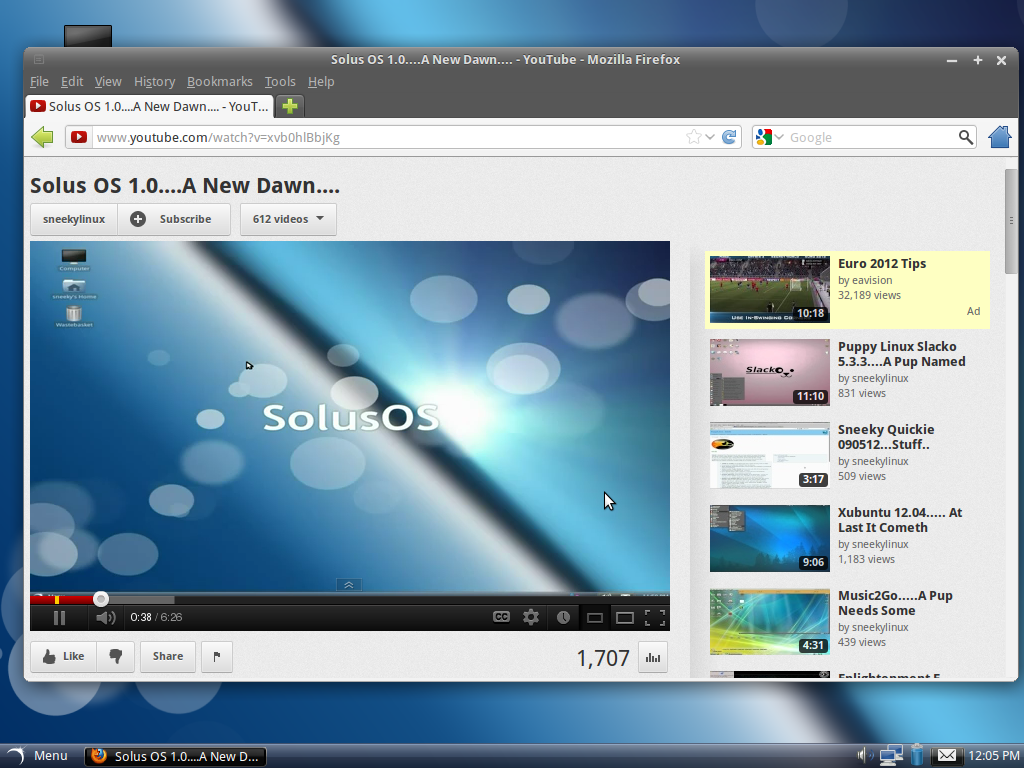Variety and choice have long been hallmarks of the Linux world, not least because new distributions emerge practically every day.
That’s been just as true in 2012 as it has in other years gone by, meaning that as this year draws to a close, we have even more options than we did when it started.
More than 30 new distros joined our sphere in rapid succession thanks just to the “31 Flavors of Fun” experiment in August, but there were also several notable arrivals that come to light over the course of the year with the potential to make a lasting mark.
Without further ado, then, here are six compelling new Linux distros that were born in 2012.
1. SolusOS
Aiming to offer a fresh alternative to the mobile-inspired environments that increasingly dominate the desktop landscape, SolusOS is a beginner-friendly Debian-based distro that features a GNOME 3 fork designed to look and behave just like the old familiar GNOME 2 so many of us have come to know and love.

“It works out of the box with great support for all your modern day computing needs including word processing, audio/video playback and editing, file sharing, and more,” the project team explains.
A video on YouTube offers a nice taste of SolusOS’s general look and feel. You can download version 1.2 of the software as a free 1GB .iso file from the project site.
2. Linux Lite
Also targeting beginners is Linux Lite, an Ubuntu-based distribution that’s aimed at newcomers to Linux, in particular.
First launched in October, Linux Lite has now reached version 1.0.2 and is based on Long Term Support (LTS) release Ubuntu Linux 12.04 “Precise Pangolin.” It offers five years of support along with the lightweight Xfce 4.8 desktop.
Code-named “Amethyst,” the software is now offered as a free download on Sourceforge.
3. Cinnarch
Then, too, there’s Cinnarch, a distro that aims to provide “a modern, elegant and powerful operating system based on one of the best Linux distributions out there, Arch Linux, and featuring the popular Cinnamon desktop environment,” in the project’s own words.
The first Cinnarch .iso image was uploaded in May, but in late November the project officially entered beta. You can download the software for free from the project site.
4. Bedrock Linux
Bedrock Linux, meanwhile, was created to make “most of the (often seemingly mutually exclusive) benefits of various other Linux distributions available simultaneously and transparently,” as its creators put it.
Specifically, “Bedrock Linux uniquely manipulates the filesytem and PATH to allow software from various other Linux distributions to coexist as though they were all from the same single, cohesive Linux distribution,” they explain. “With Bedrock Linux, for example, one could have an RSS feed reader from Arch Linux’s AUR open a webpage in a Web browser from Ubuntu’s repos while both of them are running in an X11 server from Fedora.”
In other words, Bedrock hopes to offer the best of many Linux worlds, all wrapped together in a single, new Linux distribution. A video on YouTube aims to provide a more vivid sense of what that means.
Released in August, the second alpha of Bedrock Linux, named “Momo,” is now available from the project site.
5. Qubes
As for Qubes OS, it’s a security-oriented, Fedora-based desktop Linux distro whose first official version was launched in September. Based on Xen, X Window System, and Linux, Qubes can run most Linux applications and use most Linux drivers.
Qubes Release 2 is currently in the works; it will also support Windows-based AppVMs. The current version of the software is now available as a free download.
6. Raspbian
Last but not least, it’s also worth mentioning Raspbian, the new Debian-based Linux distro that’s optimized for the Raspberry Pi. Bundled with more than 35,000 packages, the software is now officially available from the Raspberry Pi Foundation and available for download from its site.
There were, of course, many other intriguing arrivals in the Linux world over the past year, not to mention events such as the rebirth of Damn Small Linux, the death of Dreamlinux, and the appearance on the horizon of even more distros that are yet just a twinkle in their creators’ eyes.
What will the upcoming year bring? Check back regularly to find out.


